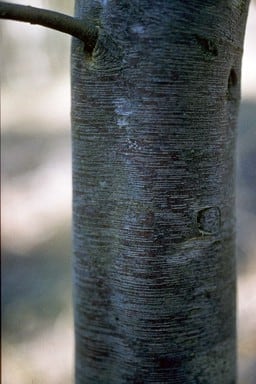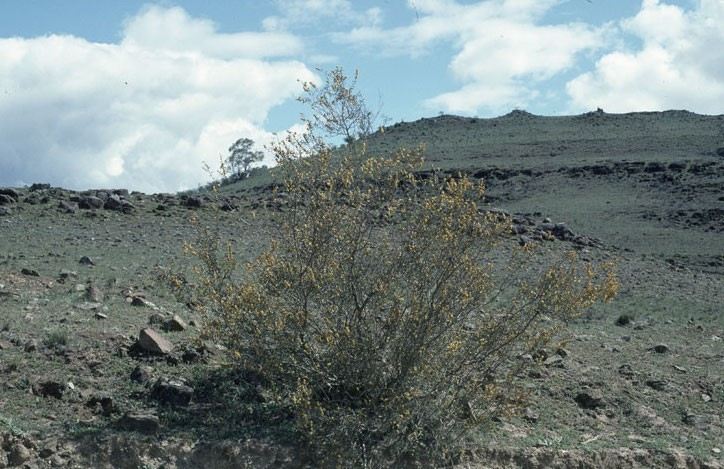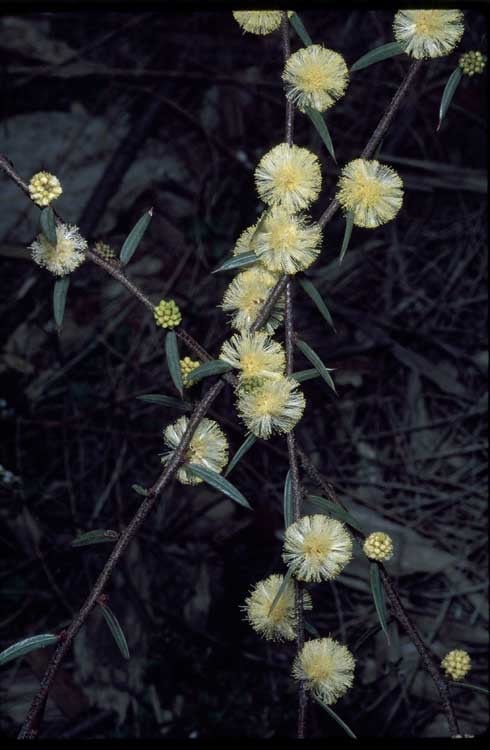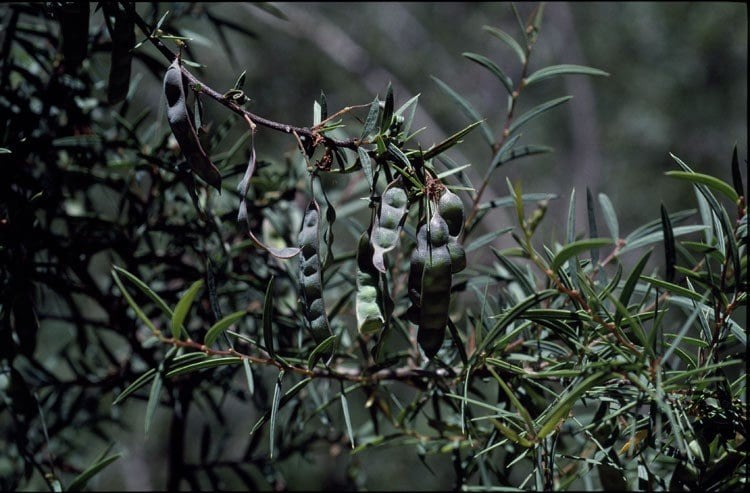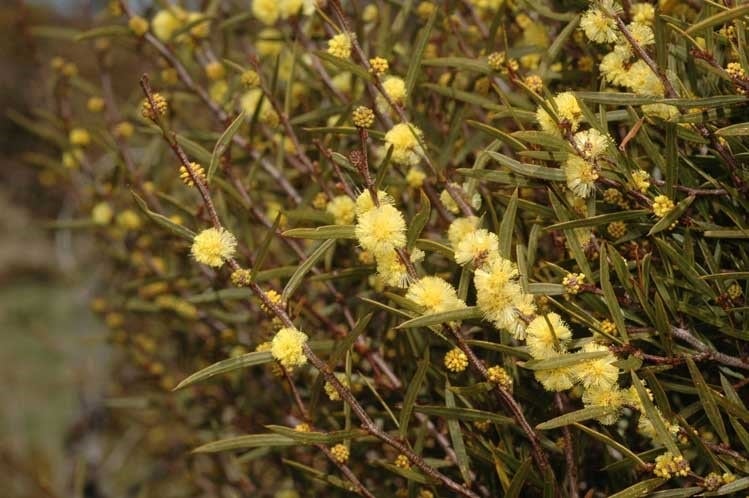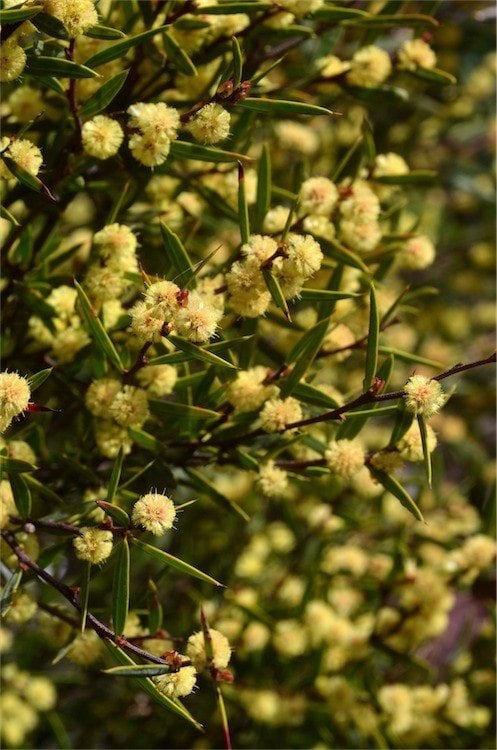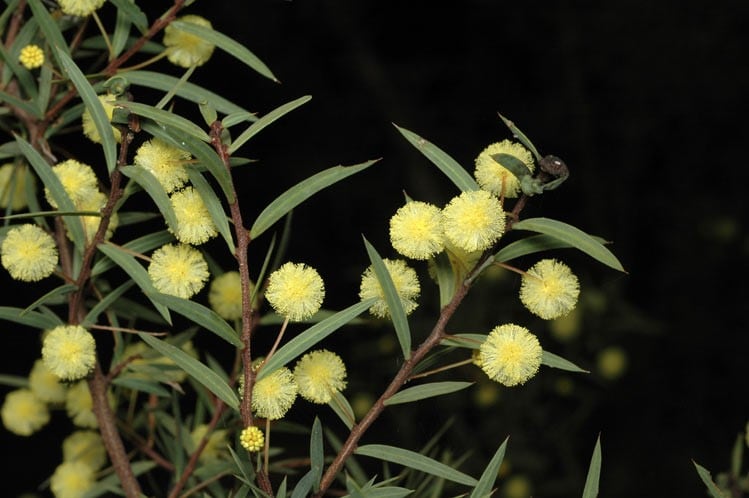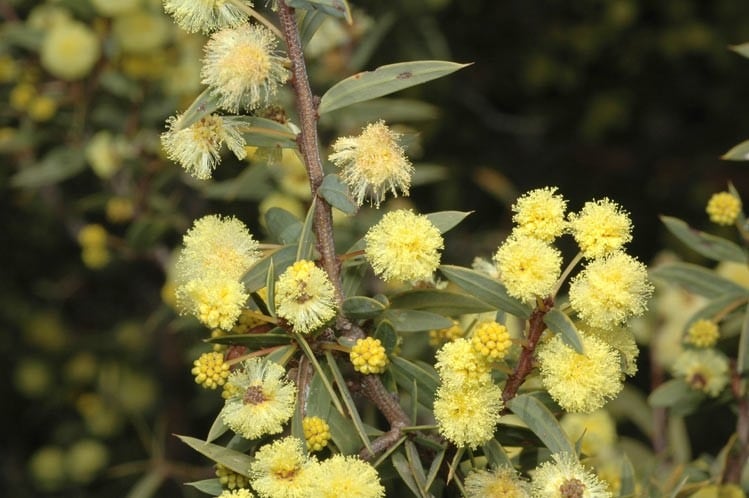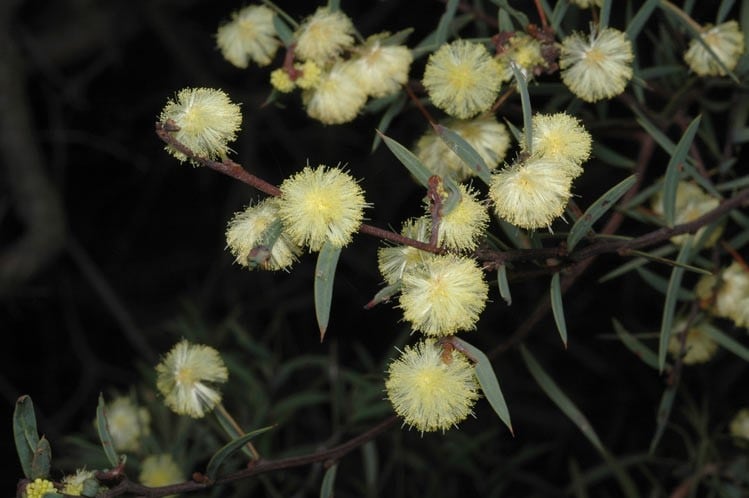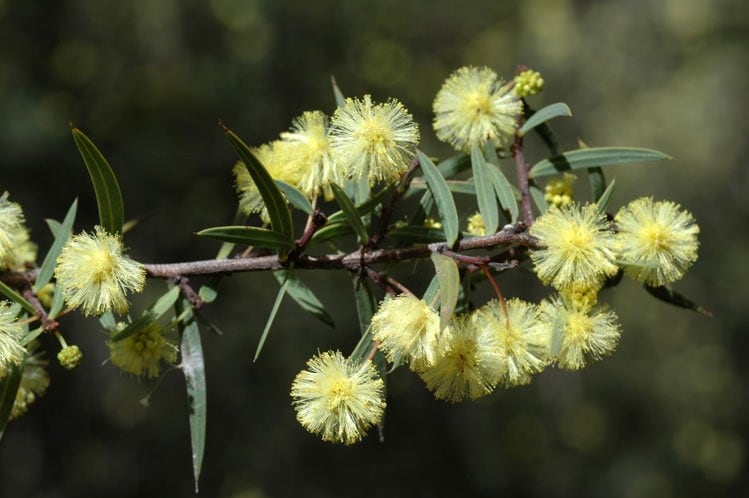Acacia siculiformis A.Cunn. ex Benth.
WATTLE
Acacias of Australia
Common Name
Dagger Wattle
Family
Fabaceae
Distribution
Common in the ranges of south-eastern Australia mainly from Grenfell and Nowra, N.S.W., S through A.C.T. to Mt Buller, Vic. Also scattered further N in N.S.W. from Gloucester to Glen Innes; scattered in Tas., occurring near the Great Lake, Ben Lomond and Little Swanport. One of the Gunn 207 syntypes of A. stuartiana was said to have been collected from Mt Wellington.
Description
Glabrous shrub to 2–3 m high, sometimes procumbent. Penultimate branchlets with prominent lenticels and/or bark breaking into ±rectangular flakes. Stipules ±deltate, c. 0.5 mm long. Phyllodes sessile, normally patent to inclined, normally slightly asymmetric, lanceolate to linear-lanceolate or narrowly elliptic, usually 1–3.5 cm long, 1.5–4 (–5) mm wide, with unequal and oblique base, pungent, rigid; midrib prominent; gland obscure, 2–6 mm above pulvinus, sometimes absent. Inflorescences simple, normally 1 per axil; peduncles 0–13 mm long; basal bract frequently cleft; heads globular, 30–45-flowered, bright yellow or pale yellow. Flowers 5-merous; sepals free. Pods stipitate, oblong to narrowly oblong, to 5.5 cm long, 4–7.5 mm wide, chartaceous. Seeds transverse to oblique, oblong to elliptic, 3–3.5 mm long, dark grey-brown to black, exarillate; funicle filiform.
Habitat
Usually grows in open forest, in rocky or sandy situations, often near streams.
Specimens
N.S.W.: Coolamon Ck, Kosciuszko Natl Park, A.Rodd & R.Coveny 2581 (NSW, PERTH). A.C.T.: Glendale, Gudgenby R., N.Burbidge & M.Gray 6183 (CANB, PERTH). Vic.: Rocky Plain, Benambra–Wulgulmerang road, A.C.Beauglehole 35884 & K.C.Rogers (MEL, PERTH). Tas.: ranges inland from Little Swanport, J.G. & M.H.Simmons 1713b (PERTH).
Notes
Plants from high elevations in southern N.S.W. (Braidwood to Mt Kosciuszko, also Sugarloaf Mt and Bethungna), Vic. and Tas. with flower-heads ±sessile, pods c. 3 cm long and phyllodes sometimes only c. 5 mm long, are sometimes called A. siculiformis var. bossiaeoides (syn. A. stuartiana). Although herbarium material suggests clinal variation to the typical variant (peduncles 3–13 mm long, pods to 5.5 cm long), future field studies may suggest that var. bossiaeoides should be formally recognised.
Acacia siculiformis is not far removed from the ‘A. ulicifolia group’; it may resemble A. saxicola, a member of this group, which has non-lenticellate branchlets, subsessile phyllodes and normally longer, longitudinal seeds. In Tas. sometimes sympatric with, and resembling, A. genistifolia. Superficially similar to A. maitlandii which has resinous-viscid branchlets, phyllodes with a short pulvinus, heads with more flowers and longitudinal seeds. Resembles broad phyllode forms of A. sphacelata subsp. recurva (W.A.).
FOA Reference
Data derived from Flora of Australia Volumes 11A (2001), 11B (2001) and 12 (1998), products of ABRS, ©Commonwealth of Australia
Author
Minor edits by B.R.Maslin & J.Rogers
B.R.Maslin
This identification key and fact sheets are available as a mobile application:
URL: https://apps.lucidcentral.org/wattle/
© Copyright 2018. All rights reserved.

